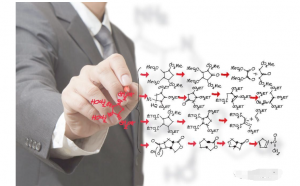Adhesion of rubber to metal
Methods include: hard glue method, adhesive method, brass plating method and direct bonding method.

1. Hard glue method
This method is to first apply or coat a hard glue layer on the metal surface, then apply the soft glue to be bonded, and finally hot-press and vulcanize to form a whole. The raw rubber content in hard rubber should not be too high. The dosage of sulfur is generally 30 to 40 parts. Iron oxide can be added to improve the bonding strength. When the dosage is about 20 parts, the bonding temperature can be doubled. If it exceeds 20 parts, the performance will decrease. In order to prevent the free sulfur in the hard rubber from diffusing to the soft rubber layer, a sulfur-free or low-sulfur semi-hard transition layer can be added between the hard rubber and the soft rubber.
Before bonding hard glue to metal, first use hard glue to prepare glue (use gasoline as solvent, ratio 1:1.5). Apply the glue to the surface of the metal to be bonded. After the solvent has evaporated, apply The hard film is attached to the metal surface. Before the hard glue and the soft glue are bonded, glue is applied to the surface of the hard glue, and then the soft glue is glued.
Since the thermal expansion coefficient of hard glue is larger than that of steel and iron, hard glue can easily delaminate from the metal core when the temperature changes.
Notes:
① The glue content of hard glue should not be too high.
② The dosage of sulfur is large (30~40 parts).
③ Appropriately increase the content of iron oxide (about 20 parts).
④ The vulcanization speed of the adhesive material should not be too fast, and the vulcanization speeds of hard glue and soft glue should be equal.
⑤ Add a sulfur-free or low-sulfur intermediate rubber layer between the hard rubber and the soft rubber.
⑥ The metal surface needs to be sandblasted and cleaned with gasoline.
⑦ Apply hard glue to the metal surface, or apply it to the metal surface in the form of glue.
⑧ Use low temperature or gradually increase the temperature for long-term vulcanization.
Features:
① High bonding strength and good corrosion resistance.
② The process is simple and suitable for bonding large metal components such as various rubber rollers and large chemical container linings.
③ It has poor heat resistance. When the working temperature exceeds 70℃, the bonding strength drops sharply.
④ Poor dynamic fatigue resistance.
Recipe example:
① Rubber roller hard rubber:
NR 100, Fe2O3 20, Zinc Barium White 20, CaCO3 32, MgCO3 11, Clay 60, Coumaron 2, Asphalt 12, Slaked Lime 5.6, Sulfur 33.6.
② Solid tire hard rubber:
NR 100, reclaimed rubber 33.3, ZnO 5, Fe2O344.4, clay 46.4, slaked lime 15, stearic acid 1.4, accelerator M 1.7, accelerator D 1.3, sulfur 37.5.
2. Adhesive method
After the metal surface is surface treated, a layer of adhesive is applied to the fresh surface, and then rubber is applied for vulcanization. This method is simple and practical, does not require the use of processing equipment, and has wide applicability. It is currently the most widely used method between rubber and metal. The bonding effect between rubber and metal depends to a large extent on the results of metal surface treatment and the properties and performance of the adhesive. For different metal materials, it is very important to choose the appropriate adhesive. The disadvantages of the adhesive method are that the solvent is toxic, pollutes the environment, damages human health, and has poor storage stability

1. Isocyanate adhesive
Mainly used for bonding between NR, CR, NBR and other rubbers and various metal materials such as steel, stainless steel, aluminum and zinc. It has high bonding strength, simple operation process, oil resistance, solvent resistance, aging resistance, acid resistance and corrosion resistance, but its heat resistance is not as good as brass plating method.
Commonly used polyisocyanate adhesives:
① Lek sodium (JQ-1 adhesive): triphenylmethane triisocyanate, easily soluble in dichloromethane, dichloroethane or chlorobenzene as an adhesive. It is generally a 20% dichloroethane solution of triphenylmethane triisocyanate, which is less toxic than diisocyanate, oil-resistant, and fatigue-resistant.
Note when using:
a. The coating should be thin, <10µm, and the maximum should not exceed 30µm.
b. Dilute the adhesive with pure dichloroethane at a ratio of 1:1 or 1:3 before use.
c. The operating environment humidity is <60%~70%.
d. Generally apply 1 to 2 times. It needs to be dried after application, and then apply a layer of protective adhesive or stick a thin layer (0.5mm) of film with a hardness of about 60 degrees as a transition layer. It is not suitable to use direct steam. vulcanization.
e. Leka sodium is easy to agglomerate, so injection pressure technology and rapid vulcanization method should be used; if molding is used for production, the pressure must be between 0.7~1MPa.
f. The parking time after adhesive application and before vulcanization should be shortened as much as possible.
g. Use Leka sodium to bond NR or SBR toWhen bonding, CR-phenolic resin is used as the intermediate layer to improve the bonding strength.
h. Adding a small amount of chlorinated NR rubber to the isocyanate liquid can improve the bonding strength.
Example: Bonding of large rubber fenders
The steel plate is first sandblasted and degreased, then coated with Leka sodium adhesive. After drying, it is coated with protective glue, a layer of high hardness (Shao A82~85 degrees) adhesive is applied, and then NR is applied.
② 2,4-Toluene diisocyanate (vulcabond TX), dissolved in ether or acetone solvent.
③ Para-diphenylmethane diisocyanate (Hylene M-50) has high polarity, active chemical properties, and is easily soluble in rubber. It can directly form chemical bonds between rubber and metal, and can also be vulcanized at low temperatures to improve bonding strength. high.
2. Chlorinated natural rubber adhesive
It is mostly used for bonding rubber to metals such as steel, aluminum, iron, zinc and magnesium. It has high bonding strength to polar rubbers such as CR and NBR, but low bonding strength to NR and SBR.
Composition: chlorinated natural rubber + solvent (toluene, ethyl chloride), if necessary, add a small amount of aliphatic hydrocarbons, ketones, ether or ethanol as mixed solvents, add resin, plasticizers and modifiers, such as phenolic formaldehyde Resins, alkyd resins, chlorinated polyolefins, aromatic nitroso compounds, DBP, etc. can improve the bonding properties of NR, SBR and metal.
The disadvantage of this method is that the initial adhesion is poor and it is difficult to bond and form. Improvement method: Apply CR-Lek sodium mixed adhesive as the transition layer. Among them, CR adhesive formula:
General CR 100, MgO 4, ZnO 5, antioxidant 2, dichloroethane 444
20%CR adhesive: 20%JQ-1 adhesive=10:1
When applying mixed transition fluid, the steel parts need to be polished, cleaned with solvent, coated with chlorinated rubber JQ-1 glue, dried for more than 40 minutes, then coated with mixed transition fluid, dried for 20~30 minutes, then glued and vulcanized.